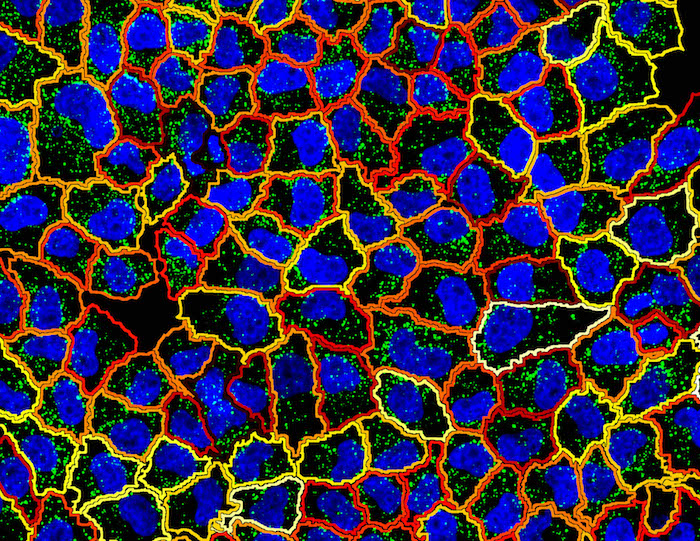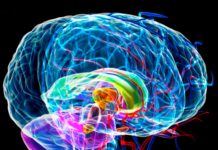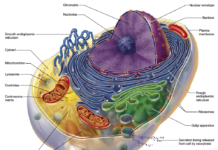 Linus Pauling’s Unified Theory of Human Cardiovascular Disease
Linus Pauling’s Unified Theory of Human Cardiovascular Disease
By Jim English and Hyla Cass, MD
Collagen is the protein that forms connective fibers in tissues such as skin, ligaments, cartilage, bones and teeth. Collagen also acts as a kind of intracellular “glue” that gives support, shape and bulk to blood vessels, bones, and organs such as the heart, kidneys and liver. Collagen fibers keep bones and blood vessels strong, and help to anchor our teeth to our gums. Collagen is also required for the repair of blood vessels, bruises, and broken bones. As the most abundant protein in the body, collagen accounts for more mass than all the other proteins put together.
Vitamin C – along with the amino acids proline and lysine – is essential for the formation of healthy collagen. Many vitamins and minerals act as catalysts to support the manufacture of proteins. In the case of collagen, however, vitamin C is actually used up as it combines with two amino acids – lysine and proline – to form procollagen. Procollagen is then used to manufacture one of several types of collagen found in different tissues throughout the body. There are at least fourteen different types of collagen, but the most common ones are:
Type I: Makes up the fibers found in connective tissues of the skin, bone, teeth, tendons and ligaments.
Type II: Round fibers found in cartilage.
Type III: Forms connective tissues that give shape and strength to organs, such as the liver, heart, kidneys, etc.
Type IV: Forms sheets that lie between layers of cells in the blood vessels, muscles, and eye.
Vitamin C Deficiency Equals Collagen Deficiency
Our body is continually manufacturing collagen to maintain and repair connective tissues lost to daily wear and tear. Without vitamin C, collagen formation is disrupted, resulting in a wide variety of problems throughout the body. Scurvy, the disease caused by vitamin C deficiency, is really a process that disrupts the body’s ability to manufacture collagen and connective tissues. With scurvy, the body literally falls apart as collagen is broken down and not replaced. The joints begin to wear down as tendons shrivel and weaken. The blood vessels crumble and begin to fall apart, leading to bruising and bleeding as vessels rupture (hemorrhage) throughout the body. Teeth loosen and fall out as the gums and the connective tissues holding teeth also begin to erode. Organs, once held firmly together by connective tissues, also lose structural strength and begin to fail. In time, the various body tissues weaken, the immune system and heart give out, leading to death.
Linus Pauling Challenges Cholesterol Theories
In 1989, the eminent American scientist and two-time Nobel Prize winner, Linus Pauling, announced a breakthrough in how we view and treat heart disease. In “A Unified Theory of Human Cardiovascular Disease,” Linus Pauling announced that the deposits of plaque seen in atherosclerosis were not the cause of heart disease, but were actually the result of our bodies trying to repair the damage caused by long-term vitamin C deficiency. In essence, Pauling believed that heart disease is a form of scurvy, and plaque is the body’s attempt to reinforce and patch weakened blood vessels and arteries that would otherwise rupture. Pauling also showed that heart disease can be prevented or treated by taking vitamin C and other supplements.
Plaque Deposits
Pauling based his revolutionary theory on a number of important scientific findings. First was the discovery that plaque deposits found in human aortas are made up of a special form of cholesterol called lipoprotein (a) or Lp(a), not from ordinary LDL cholesterol. Lp(a) is a special form of LDL cholesterol that forms the thick sheets of plaque that obstruct arteries.
Another finding central to Pauling’s theory was the observation that plaque deposits are not formed randomly throughout the circulatory system. This was first reported in the early 1950s when a Canadian doctor, G. C. Willis, MD, observed that plaque always forms nearest the heart, where blood vessels and arteries are constantly being stretched and bent, rather than being spread evenly throughout the entire cardiovascular system. Willis also noted that plaque deposits always occur in regions that are exposed to the highest blood pressures, such as the aorta, where blood is forcefully ejected from the heart.
In 1985, a team of researchers verified that plaque only forms in areas of the artery that become damaged. Just as cracks form in a garden hose that has become weak and worn from constant bending and high-pressure, cracks form in the lining of the arterial wall. As these tiny cracks open up they expose strands of the amino acid lysine (one of the primary components of collagen) to the blood stream. It is these strands that initially attract Lp(a). Lp(a) is an especially “sticky” form of cholesterol that is attracted to lysine. Drawn to the break, Lp(a) begins to collect and attach to the exposed strands. As Lp(a) covers the lysine strands, free lysine in the blood is drawn to the growing deposit. Over time, this process continues as lysine and Lp(a) are both drawn from the blood to build ever-larger deposits of plaque. This process gradually reduces the inner diameter of the vessels and restricts its capacity to carry the blood.
Heart Disease as Low-Level Scurvy
Observing the newly described process of plaque formation, Pauling recognized a similarity to underlying processes seen in scurvy. He also saw similarities between human and animal models of atherosclerosis that pointed to a connection with scurvy. First, cardiovascular disease does not occur in any of the animals that are able to manufacture their own vitamin C. Many animals produce large amounts of vitamin C that are equivalent to human doses ranging from ten to twenty grams per day. Second, the only animals that produce Lp(a) are those which, like man, have also lost the ability to produce their own vitamin C, such as apes and guinea pigs.
Putting all the pieces of the puzzle together, Pauling suggested that the ability to form plaque is really the body’s attempt to repair damage caused by a long-term deficiency of vitamin C. He knew that our ancestors lived in tropical regions where the diet consisted primarily of fruits and vegetables. With a daily intake estimated to be in the range of several hundred milligrams to several grams per day, our ancestors easily survived without the gene required to manufacture vitamin C. Almost unnoticed, this mutation was passed on to successive generations, and only became a problem when early humans began to spread to other regions of the world. In effect, when humankind left the “garden,” the lack of a reliable and adequate supply of dietary vitamin C led to scurvy.
Pauling thought that scurvy was one of the greatest threats to humankind’s early survival, and believed that the loss of blood during times of vitamin C deficiency, particularly during the Ice Ages, likely brought humans close to the point of extinction.
Plaque as a Life Saver?
The core of Pauling’s theory is that, over time, the body developed a repair mechanism that allowed it to cope with the damage caused by chronic vitamin C deficiency. The repair mechanism is as elegant as it is simple. When arteries became weak and began to rupture, the body responded by “gluing” the damaged areas together with Lp(a) to prevent a slow death from internal bleeding. In essence, plaque is the body’s attempt to patch blood vessels damaged by low-level scurvy. Accordingly, Pauling believed that conventional “triggers” of plaque formation, such as homocysteine and oxidized cholesterol, are actually just additional symptoms of scurvy.
Scientific Support for the Pauling Unified Theory
Pauling’s theory was unique in that it addressed a fact never explained by older, mainstream theories. Specifically, Pauling finally explained why plaque isn’t randomly distributed throughout the body, but restricted to areas of high mechanical stress. A surprising number of animal studies have been found to support Pauling’s theory. Research conducted with animals that cannot make their own vitamin C found that when vitamin C levels are reduced, collagen production drops and blood vessels become thinner and weaker. Additional studies also confirm that when animals are deprived of vitamin C, their bodies respond by increasing blood levels of Lp(a) and forming plaque deposits to strengthen arteries and prevent vessel ruptures.
Collagen Melts Plaque, Keeps Arteries Open
In addition to taking vitamin C to prevent atherosclerosis, Pauling recommended a combination of vitamin C and the amino acids lysine and proline to help remove existing plaque while strengthening weak and damaged arteries. As mentioned previously, the body produces collagen from lysine and proline. Pauling reasoned that by increasing concentrations of lysine and proline in the blood, Lp(a) molecules would bind with the free lysine, rather than with the lysine strands exposed by the cracks in blood vessels.
How Much Vitamin C Does it Take to Prevent Atherosclerosis?
While acute scurvy can be prevented by a mere 10 mg vitamin C per day, there is no current research showing how much vitamin C might be required to prevent the atherosclerotic plaques of chronic scurvy. In his Unified Theory, Linus Pauling often recommended 3,000 to 5,000 mg per day as an effective dose. Anecdotal reports from patients using the Pauling Therapy indicate that rapid recovery is frequently the rule, not the exception, allowing many people to avoid open heart surgery and angioplasty.
Pauling Therapy for the Reversal of Heart Disease
- Vitamin C: to bowel tolerance – as much as you can take without diarrhea. For most people this will be in the range of five to ten grams (5,000-10,000 mg.) each day. Spread this amount into two equal doses 12 hours apart. (Vitamin C prevents further cracking of the blood vessel wall – the beginning of the disease.)
- L-Proline: 3 grams twice per day (acts to release lipoprotein(a) from plaque formation and prevent further deposition of same).
- L-Lysine: 3 grams twice each day (acts to release lipoprotein(a) from plaque formation and prevent further deposition of same).
- Co-enzyme Q10: 90-180 mg. twice per day (strengthens the heart muscle).
- L-Carnitine: 3 grams twice per day (also strengthens the heart muscle).
- Niacin: Decreases production of lipoprotein(a) in the liver. Inositol hexanicotinate is a form of niacin which gives less of a problem with flushing and therefore allows for larger therapeutic doses. Begin with 250 mg. at lunch, 500 mg. at dinner and 500 mg. at bedtime the first day; then increase gradually over a few days until you reach four grams per day, or the highest dose under four grams you can tolerate. Be sure to ask your doctor for liver enzyme level tests every two months or less to be sure your liver is able to handle the dose you are taking.
- Vitamin E: 800-2400 IU per day. (Inhibits proliferation of smooth muscle cells in the walls of arteries undergoing the atherosclerotic changes.)
References
1. Marcoux C; Lussier-Cacan S; Davignon J; Cohn JS. Association of Lp(a) rather than integrally-bound apo(a) with triglyceride-rich lipoproteins of human subjects. Biochim Biophys Acta 1997 Jun 23;1346(3):261-74.
2. Ensenat D, Hassan S, Reyna SV, Schafer AI, Durante W. Transforming growth factor-b1 stimulates vascular smooth muscle cell L-proline transport by inducing system A amino acid transporter 2 (SAT2) gene expression. Biochem. J. (2001) 360, (507-512)
3. White AL; Lanford RE. Cell surface assembly of lipoprotein(a) in primary cultures of baboon hepatocytes. J Biol Chem 1994 Nov 18;269(46):28716-23.
4. Klezovitch O; Edelstein C; Scanu AM. Evidence that the fibrinogen binding domain of Apo(a) is outside the lysine binding site of kringle IV-10: a study involving naturally occurring lysine binding defective lipoprotein(a) phenotypes. J Clin Invest 1996 Jul 1;98(1):185-91.
5. Boonmark NW; Lou XJ; Yang ZJ; Schwartz K; Zhang JL; Rubin EM; Lawn RM. Modification of apolipoprotein(a) lysine binding site reduces atherosclerosis in transgenic mice. J Clin Invest 1997 Aug 1;100(3):558-64.
6. Phillips J; Roberts G; Bolger C; el Baghdady A; Bouchier-Hayes D; Farrell M; Collins P. Lipoprotein (a): a potential biological marker for unruptured intracranial aneurysms. Neurosurgery 1997 May;40(5):1112-5; discussion 1115-7.
7. Stubbs P; Seed M; Moseley D; O’Connor B; Collinson P; Noble M. A prospective study of the role of lipoprotein(a) in the pathogenesis of unstable angina. Eur Heart J 1997 Apr;18(4):603-7.
8. Shinozaki K; Kambayashi J; Kawasaki T; Uemura Y; Sakon M; Shiba E; Shibuya T; Nakamura T; Mori T. The long-term effect of eicosapentaenoic acid on serum levels of lipoprotein (a) and lipids in patients with vascular disease. J Atheroscler Thromb 1996;2(2):107-9.
9. McCully KS, Homocysteine metabolism in scurvy, growth and arteriosclerosis. Nature 1971;231:391-392.
10. Pauling L, Rath M. Pro. Nat. Acad. Sci USA, Vol 87, pp 9388-9390, Dec 1990.
11. Carr AC, Frei B. Toward a new recommended dietary allowance for vitamin C based on antioxidant and health effects in humans. American Journal of Clinical Nutrition 1999;69(6):1086-1107.
12. Simon JA, Hudes ES. Serum ascorbic acid and gallbladder disease prevalence among US adults: the Third National Health and Nutrition Examination Survey (NHANES III). Arch Intern Med. 2000;160(7):931-936.
13. Stephen R, Utecht T. Scurvy identified in the emergency department: a case report. Journal of Emerg Med. 2001;21(3):235-237.
14. Cameron E, Pauling L. Supplemental ascorbate in the supportive treatment of cancer: Prolongation of survival times in terminal human cancer. Proc Natl Acad Sci U S A. 1976;73(10):3685-3689.















Thanks for sharing this informative article with us .
Nice content and useful too. thanks for sharing this one.
Love reading this content , thanks for sharing
[…] The Collagen Connection. (2013, April 19). Retrieved May 1, 2017, from https://nutritionreview.org/2013/04/collagen-connection/ […]
[…] that it is first call treatment for all infectious diseases, lung infections, and other diseases like heart disease and all degenerative diseases, the very first announcement from the TGA in Australia in 2020 […]
Thanks for sharing this Collagen Connection, and about
[…] tumours dissolve collagen Lysine tablets or foods with Vitamin C to remake collagen are part of the anti-angiogenesis formula. Proanthocyanidins from berries, Resveratol from grapes, […]
[…] available to create plaque. In this way, supporting healthy collagen production helps support cardiovascular health. Additionally, collagen gives blood vessels their elasticity and thus a decrease in collagen would […]
[…] and causing inflammation damage to brain cells. This is also of importance in the arteries where white blood cells respond to oxidised cholesterol in the arterial wall and in the process of trying to remove it cause inflammation and become dysfunctional macrophages […]
[…] English J, Cass H. 2013. The Collagen Connection. Nutrition Review [Internet] [accessed 17 April 2018] Available at https://nutritionreview.org/2013/04/collagen-connection/ […]
[…] The production of collagen requires vitamin C and the amino acids proline and lysine. However, so does the production of arterial plaque! If the body is using vitamin C, proline, and lysine to make collagen in the body, it decreases the amount available to create plaque. In this way, supporting healthy collagen production helps support cardiovascular health7. […]
Thanks for sharing this Collagen Connection, amazing one.
[…] The Collagen Connection […]
Thanks for sharing this with us